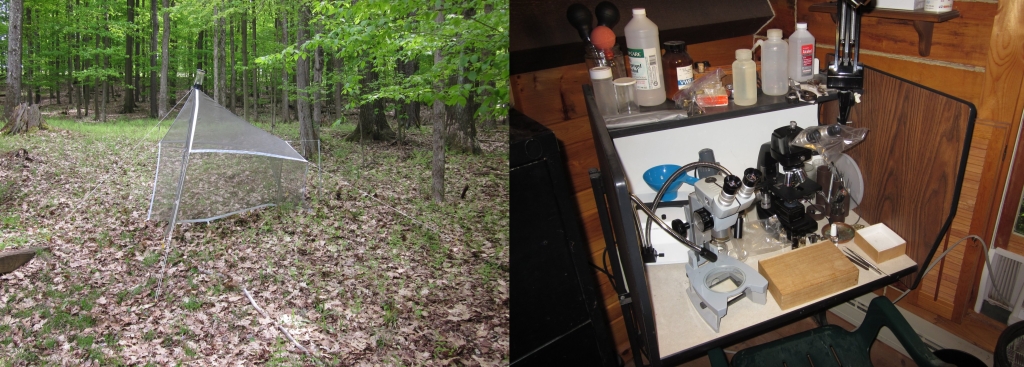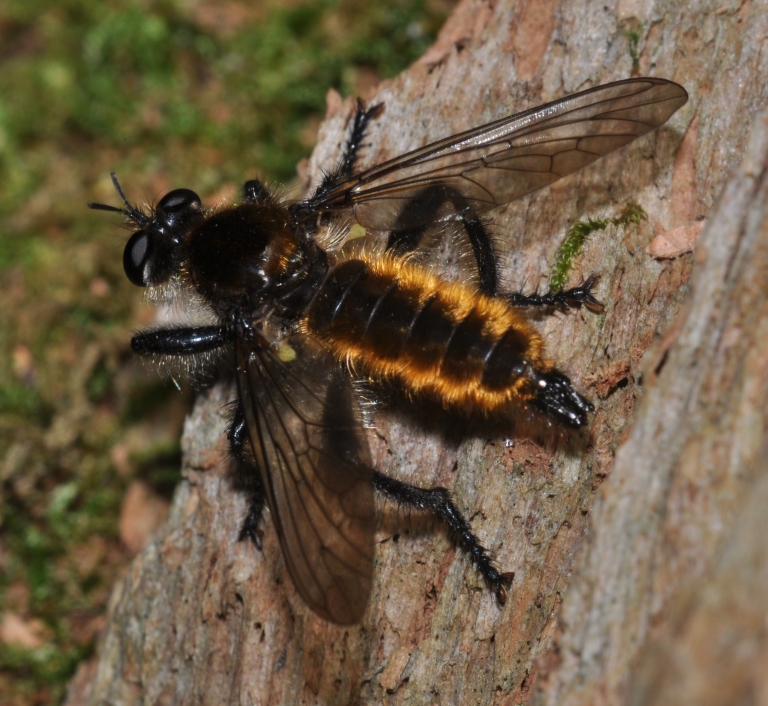Basking in a Laphriine Fly?
April 2, 2012I made a lot of little changes since I last posted; mostly in the HTML code; nothing significant though. The borders on the habitus thumbnails should now be gone if you're using Internet Explorer, and there's some mouseover text in its place. I also consolidated the two links pages. I did this partly to add a section with some general references I thought might be useful to avocational Dipterists, and partly to clear up some screen real estate. The links space at the bottom of the introductory page is limited and I'm soon going to be adding several sections, e.g. an illustrated glossary and an acknowlegements section, as well as eventually links to the pages on other genera.
On another subject, flies belonging to the Laphriini are generally not the most interesting of robber flies as far as behavior goes; they pounce both on their prey and on their mates. Nor do they seem to have any particular methods for dealing with extremes of heat, as are apparent in desert- and scrub- inhabiting genera. In temperate regions laphriines as a rule inhabit forest understory and consequently have a black, sometimes metallic cuticle, well provided with long hairs. They appear as if they were built to aquire and retain heat. Yet temperature extremes are muted in forest understory, and with perhaps one exception I have never seen an individual orient itself to sunlight in the manner of a grasshopper or butterfly. The photograph for that exception is the top of the two to the right.
This species is currently known as Laphria sericea Say. The specimen is a male. It was on weathered wood at edge of stump in forest understory, in the woods surrounding my log house in Clearfield Co., PA, July 05, 2011. In spite of the date it seemed slightly cool to me. Later I managed to catch and identify the fly. For the record, it was not teneral.
Now I can't say for sure that it was actually basking. But it sat with its wings spread for a full minute or two. Normally they are flexed tightly over the abdomen, as in this shot of another male, with a click beetle as prey, just below the first.
In this case I did not catch the fly, but did watch it long enough to determine both the species and sex. This shot was also taken in the woods around my house, on June 18, 2011.




 Digg
Digg
 Facebook
Facebook
 StumbleUpon
StumbleUpon
 LinkedIn
LinkedIn
 Twitter
Twitter
 Email
Email